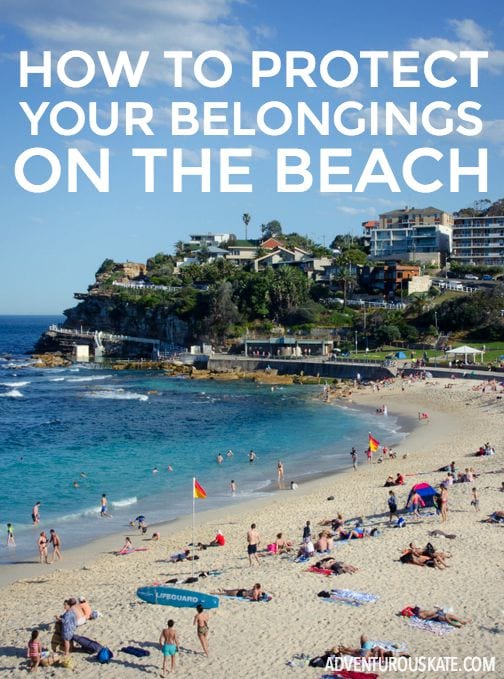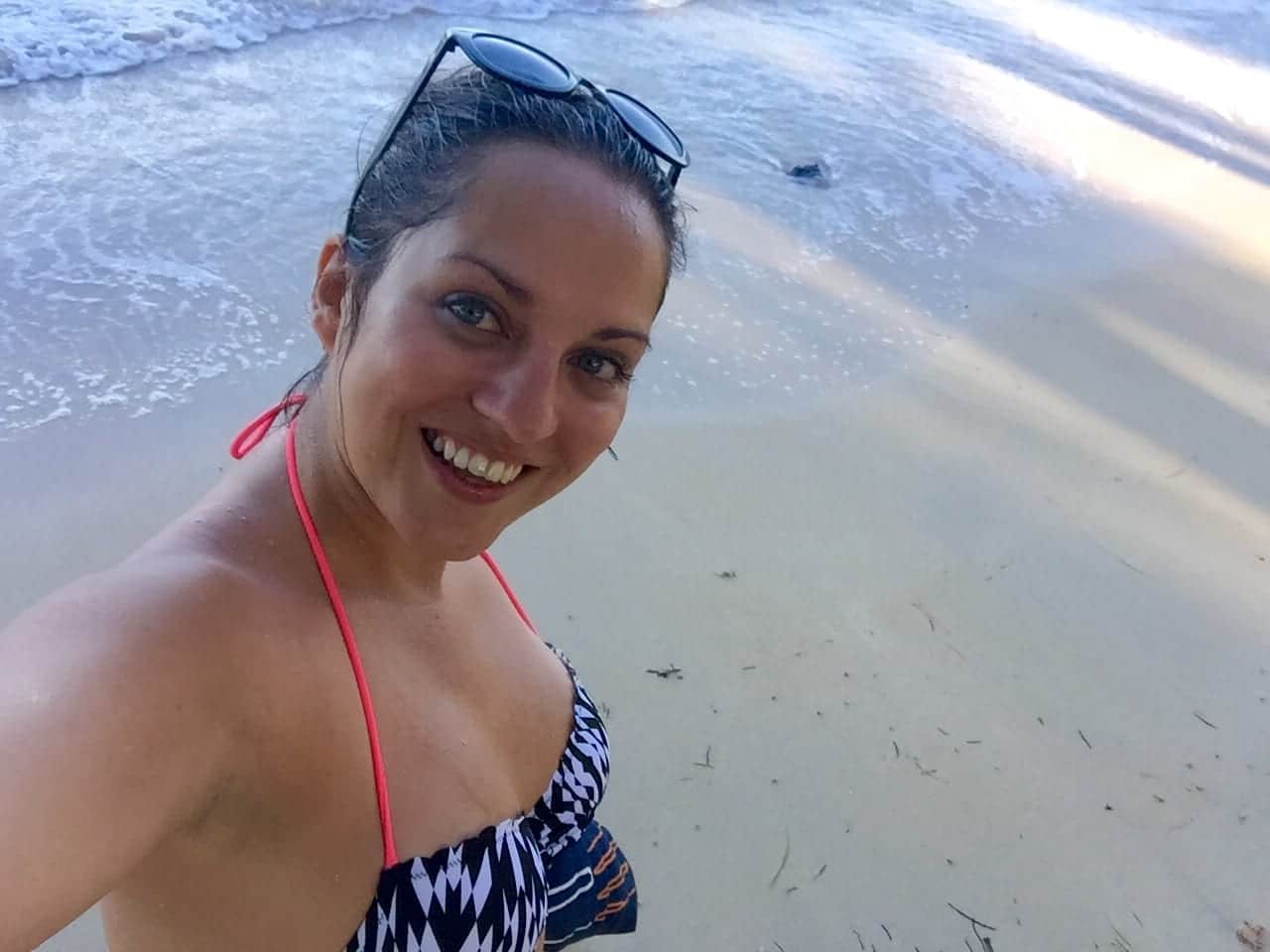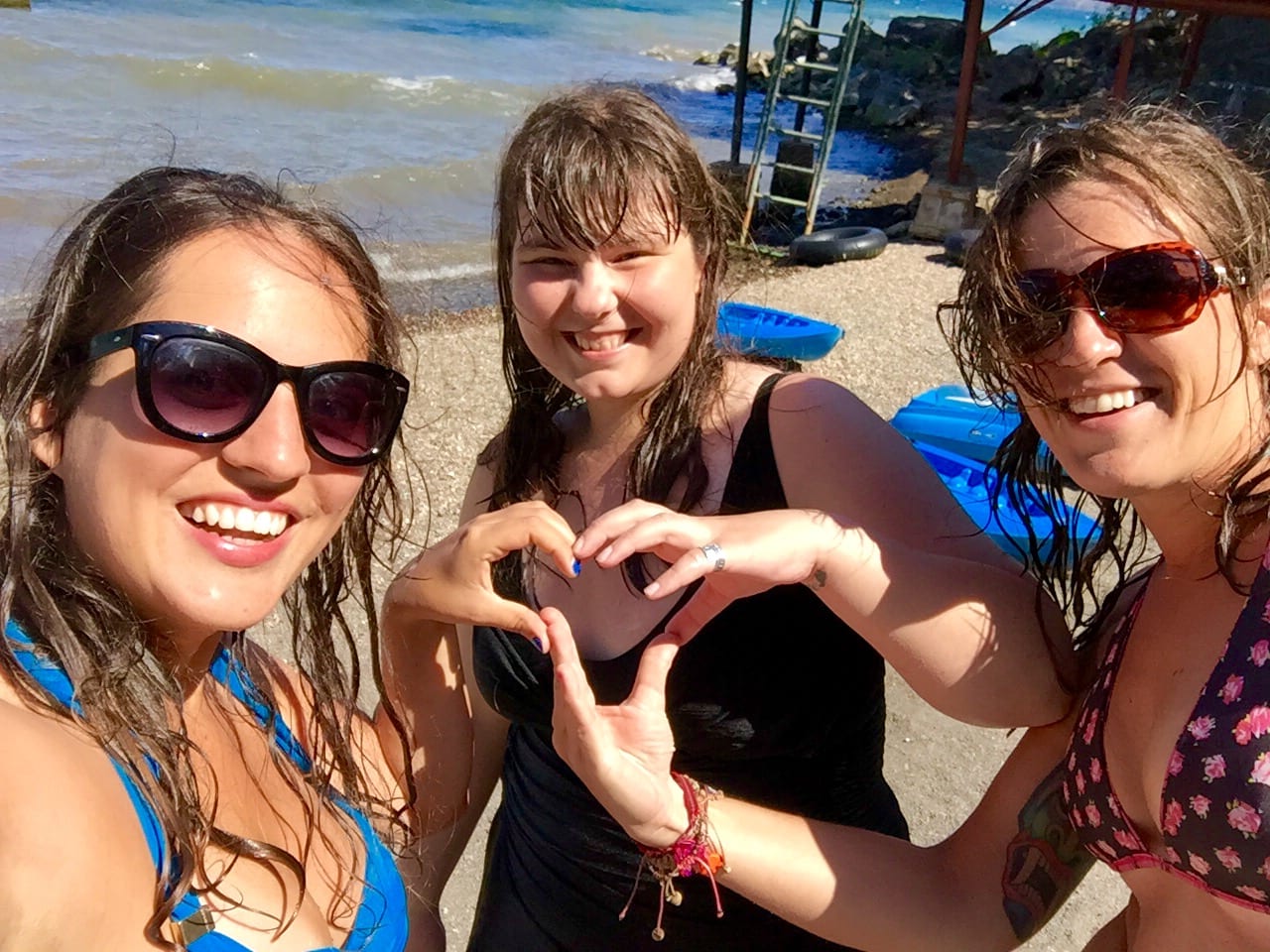Adventurous Kate contains affiliate links. If you make a purchase through these links, I will earn a commission at no extra cost to you. Thanks!
Imagine relaxing on the whitest beach you’ve ever seen. The breeze is gentle, the sun is warm but not harsh, and you’ve got your eye on the bright blue sea before you.
And that’s not all — you’re here alone. Because you feel like it. And you’re having a kickass time.
Ordinarily, you’d trade off swimming time and watch-the-bags time with a friend, but on your own, that’s not an option. And that water is looking very inviting. So you run straight in, diving beneath the surface, and emerge just in time to see…
…a dastardly criminal running off with your $800 smartphone!
Many solo travelers shy away from swimming at the beach, which I think is a shame. I love swimming in the ocean year-round (well, Thailand and Nicaragua in the winter months) and I make beach time a major part of my travels, whether it’s on the Adriatic or the Caribbean.
I don’t let traveling solo stop me from spending a glorious afternoon sunbathing on the sand — nor do I let it keep me from taking a swim on my own, even if I have valuables with me.
People are always asking me how to protect your belongings if you go to the beach alone — so here are my top tips for solo beach travelers!
1) Decide whether you even need your valuables at the beach.
Sure, you want to take photos at the beach, but can you do that and then head back to your accommodation to drop off your phone, then return empty-handed and go for a swim?
If you’re staying close to the beach (or even on the beach!), this is a smart option. If you’re staying further away from the beach, it becomes less desirable.
When you lock up your valuables in your accommodation, be sure to use a portable safe and lock it to the sturdiest thing in your room. I consider my portable safe the most important thing I pack.
One thing…if you choose this route, just hope that The Rock doesn’t randomly show up on your beach. You’d really hate to not have your camera for that.
2) Leave your belongings with a trustworthy fellow traveler while you swim.
Other people are in the same position as you — they want to swim, but they’re alone and they don’t want to leave their belongings unattended. Seek these people out and ask if they could watch your things for a few minutes while you take a short swim, then offer to do the same for them.
You’ve got to be careful who you ask. I spend time watching people on the beach and seeing how they behave before choosing someone to ask. What are they doing? Who are they with? Are they sober? Do they look responsible?
I personally look for the following kinds of people to ask:
- Fellow solo female travelers around my age
- Families with kids
- Older couples
I personally choose to avoid asking the following kinds of people:
- Teenagers or very early twenty-somethings
- Local kids
- Solo men (usually)
While this system isn’t foolproof, and people of all demographics can be trustworthy, I find that older rather than younger people in established families or groups tend to have a bit more “insurance.” I also tend to pick out bookworms rather than people who are drinking, and I make sure that they have their own valuables within their eyesight, not just pushed behind them somewhere.
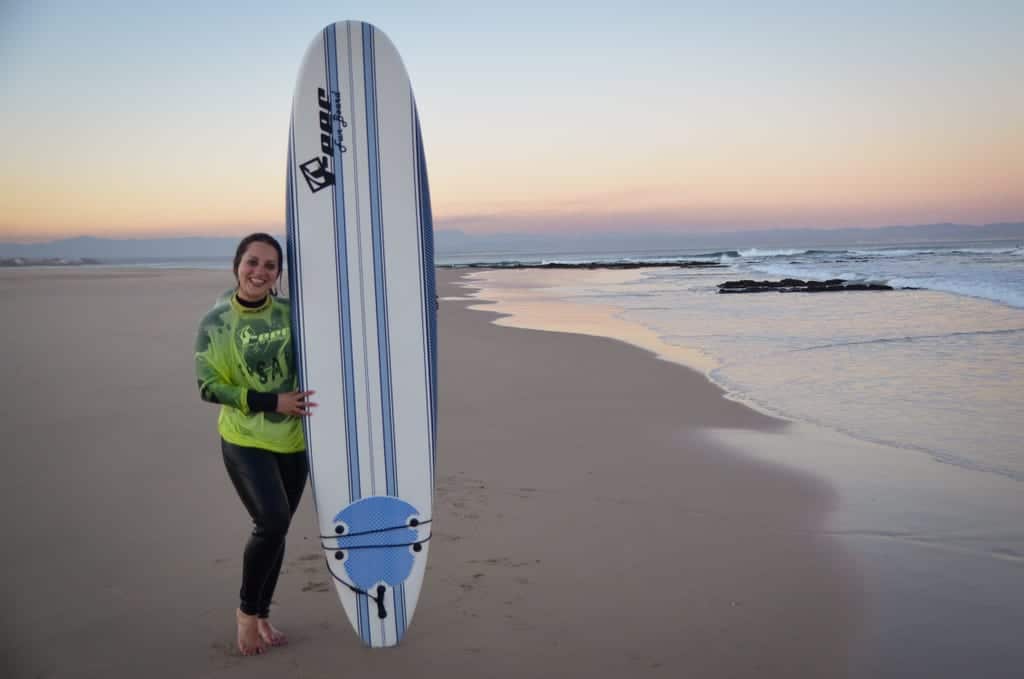
3) Pay for a locker or a service that will guide your valuables.
Some beaches have lockers for rent, which is great, but they’re uncommon.
Many European beaches have chairs and umbrellas for rent, and these often come with a locker or even a private lockable changing shack right on the beach.
If those aren’t an option, consider doing a water activity like renting a kayak or stand-up paddleboard. Companies who run activities like these have systems for holding onto your belongings while you get in the water.
Sometimes they’ll allow you to keep your stuff in one of their lockers for a little bit longer if you want to take a swim afterward. Just ask before you pay for the rental.
4) Buy something at a bar or restaurant, then leave it with the staff.
When you arrive at the beach, visit a nearby restaurant and spend some cash — buy a drink or have a meal. Then ask the bartender or waitress if it’s possible for her to watch your bag while you have a swim.
I’ll be honest — I consider this the iffiest option on the list, and it would probably be my last resort. Every bar and restaurant varies. Many refuse due to the liability factor; others agree but will get distracted and forget to watch your bag closely.
But there are some bars and restaurants that take it seriously and will keep a close eye on your belongings as long as you take a relatively brief swim.
If you choose to go the bar or restaurant route, ask about exactly where your belongings will be kept and who will be watching them and for how long. Your best-case scenario is if it’s kept on a shelf behind the bar and the bartender won’t be leaving the bar during your swim. Lock your bag, if you can, before handing it over.
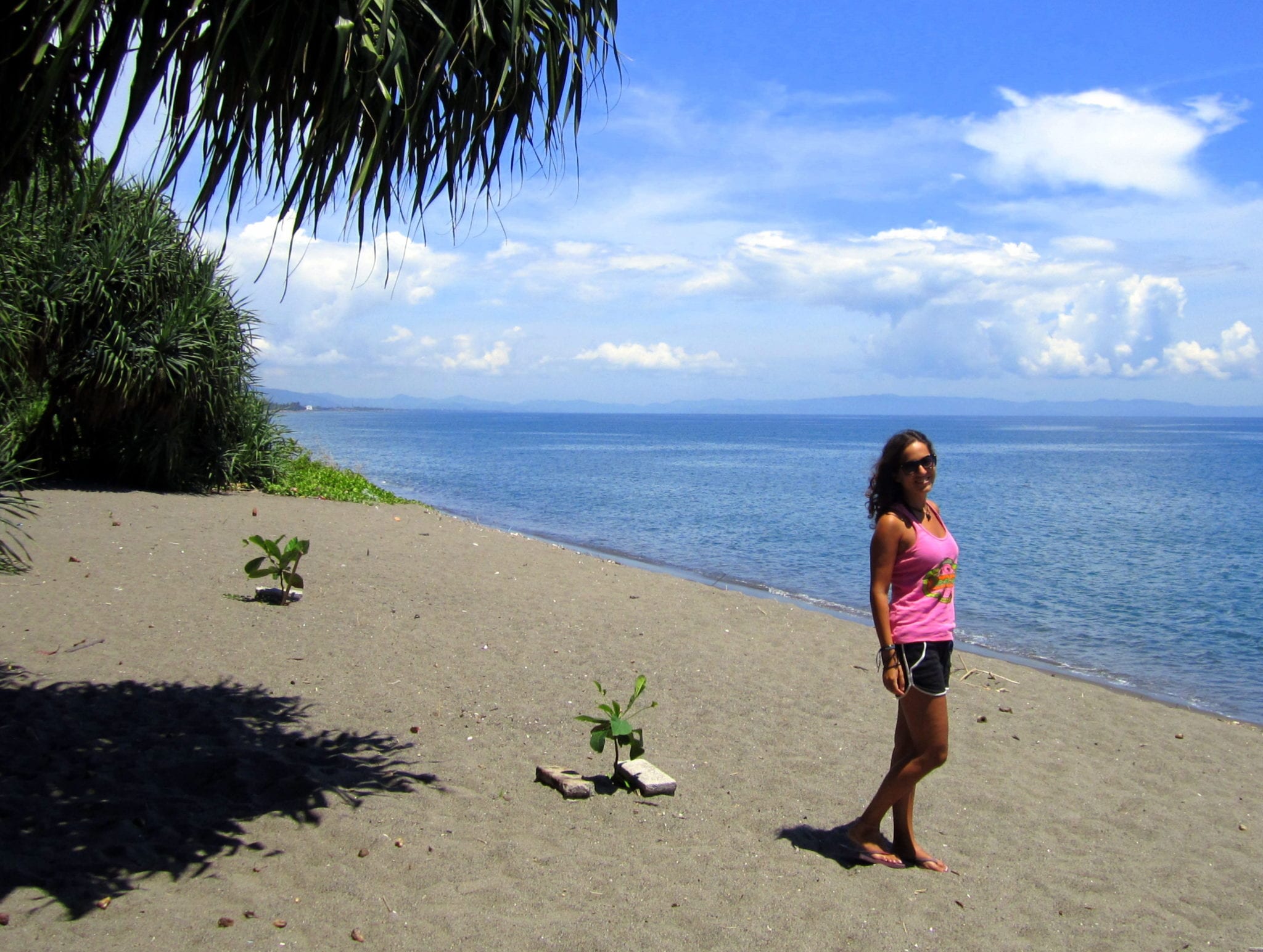
5) Swim with your valuables in a dry bag.
I actually travel with two dry bags, which many people think is excessive, but trust me — after you survive a shipwreck, nothing is excessive.
My first dry bag is an extra-large (20L) Sea to Summit Dry Sack, which I keep in case another of my boats goes down and I have to put my entire tech bag in it. So far, it’s been most useful on the very wet panga ride to Little Corn Island in Nicaragua.
My second dry bag, and the kind that I recommend you use while swimming, is a generic bag from Central America, but the most similar model to it is the Freegrace small 5L Ultimate Lightweight Dry Sack.
This bag is small enough to sling around your shoulder, yet it wraps your valuables up tightly. If you want to go swimming with it, it will float gently on the surface — not ideal for free-diving or anything like that, but perfect for surface swimming!
I recommend that you use a plastic bag as a liner and test it out without your electronics inside, seeing if there are any leaks, before you actually swim with it. Wrap it up tightly and you’re good to go.

Know that nothing is ever 100% safe.
You can choose the sweetest old lady to watch your phone and she could be part of an international crime ring. Likewise, the day you choose to leave your valuables at home could be the day a hostel staffer breaks into the dorms.
Nothing is ever 100% safe, not even if you stay home. Yes, you could have your belongings stolen if you followed any of these tips, bit pointing out these tiny loopholes isn’t the point.
Travel — and life — are not about learning how to be 100% safe. They’re about reducing your risk as much as possible. Just because seat belts don’t save lives 100% of the time, that doesn’t mean they’re a waste of time. These tips reduce your risk of theft enormously, and this is why you should follow them.
And that’s one reason why you should purchase travel insurance before your trip. If your items are stolen, they will help you get refunded. I use and recommend World Nomads.
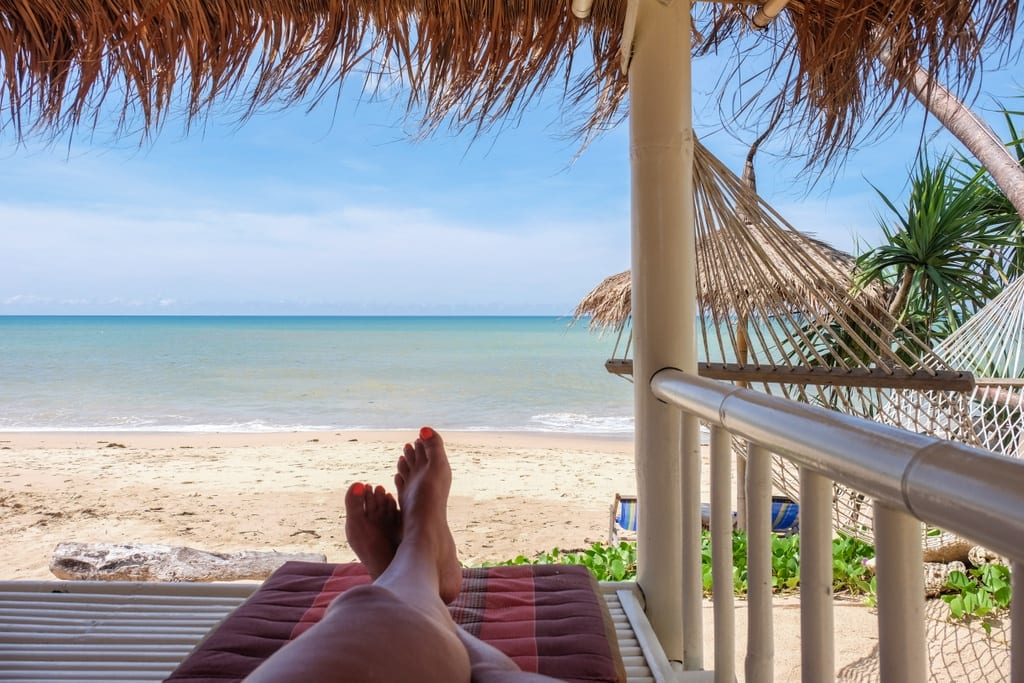
My Favorite Beaches in the World
Now that you know how to protect your belongings, how about a little travel inspiration? After 74 countries (and all seven continents), here are some of my favorite destinations:
Koh Lanta, Thailand. The best island on the planet, perhaps my favorite place on the planet that isn’t Antarctica, and I’m so pleased that over the years it hasn’t lost its charm. Here’s a complete guide to the island. The best beach is Relax Bay, pictured above.
The Florida Panhandle. This part of Florida is called the Emerald Coast and is home to soft white sand beaches with bright teal water. I recommend the retro town of Seaside, where The Truman Show was filmed.
Belize. Caye Caulker may be mostly beachless, but sailing down the coast for three days will bring you to uninhabited islands straight out of a movie.
Western Australia. This is the wildest part of the country and the beaches do not disappoint! Cottesloe Beach in Perth is the spot to see and be seen at sunset; Broome’s Cable Beach has camel rides as the shadows get long, and Shell Beach is one of few beaches in the world totally comprised of seashells.
Little Corn Island, Nicaragua. An under-the-radar destination that won’t be unknown for much longer. A tiny speck in the Caribbean Sea with low-key island living.
Boracay, Philippines. The whitest, softest sands with unbelievable sunsets, and the sweetest mangos in the world (which can be lit on fire at a Greek restaurant). Do keep in mind that this island is dealing with overdevelopment and will be shut down temporarily starting in mid-2018.
Southern Albania. Did you know that this country has some of the best beaches in Europe? Saranda makes a great base but the best beaches are a drive or bus ride away — consider day tripping to Ksamil and Drymades.
Sydney, Australia. I’m convinced Sydney has the best urban beaches on the planet — soft, white, and impeccably clean. Do the coastal walk and see for yourself.
